In your quest to learn about how Montessori teaches math, you will come across many terms with which you may not be familiar. One of those terms may be something called 1:1 correspondence.
In this article, you will learn the basics of how Montessori math is taught, what one-to-one correspondence is, how Montessori uses it, and you will get some great 1:1 correspondence activity ideas you can do right at home with your child.
What is 1:1 correspondence?
One-to-one correspondences formalize one of the most fundamental mathematical equivalences between two sets: the sets are distinct sets, but the correspondence means we can treat them as if they are ‘morally' the same set.
Confused yet? Don't be.
Put plainly, 1:1 correspondence is the concept that two different things can have the same numerical value. For example, the written number “5” has the same numerical value as 5 raisins. (Or any other item.)
This is a pretty critical concept for children to learn, as successfully using math depends on understanding the meaning of the written numbers.
Being able to rote count and recite math facts may get some of us through school, but this ability renders itself useless when critical thinking in regards to actual quantities is needed.
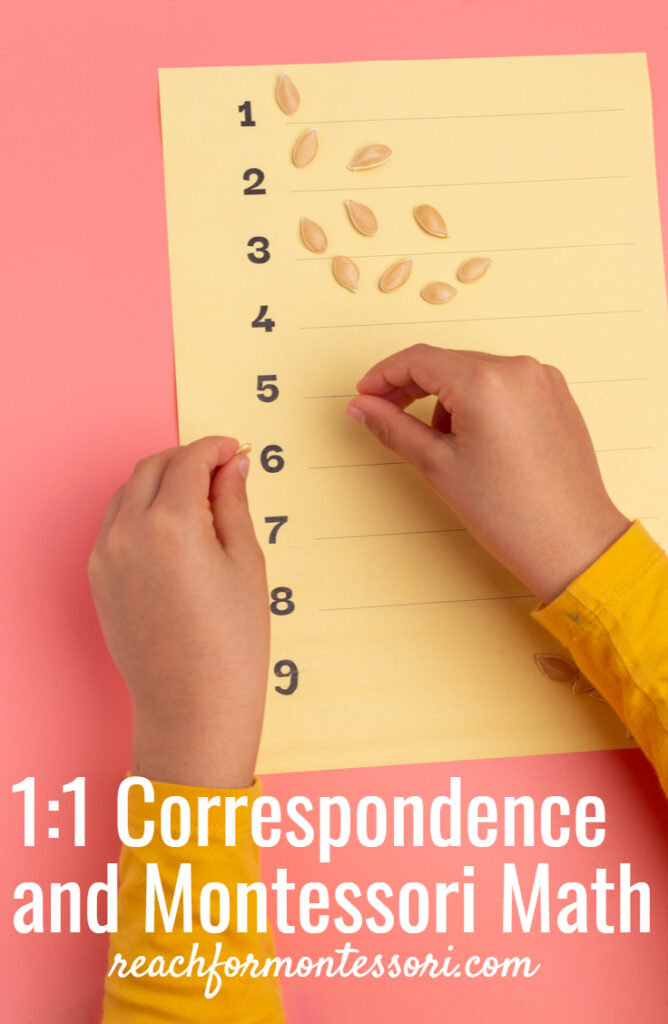
Montessori math: a basic rundown and its use of 1:1 correspondence
Montessori teaches math in order of concrete to abstract. This means that children will first work with physical quantities only (no written representation) and will progress through the Montessori math materials/activities all the way until they are ready for the memorization of math facts.
The purpose of teaching math in this fashion is to give children a deeper understanding of the connection between written numbers and the quantities they represent.
Montessori also encourages the development of a child's mathematical intuition to a great degree through the use of manipulatives.
And the concept of 1:1 correspondence is present in Montessori math from the very first math material.
One to one correspondence is fundamental to Montessori and to having an effective understanding of math.
This level of math understanding is missing from many traditional early learning programs in favor of the memorization and recitation of numbers.
Rote counting is useful for remembering sequence, however, without the understanding of the quantities numbers represent, counting out loud is simply just demonstrating memory.
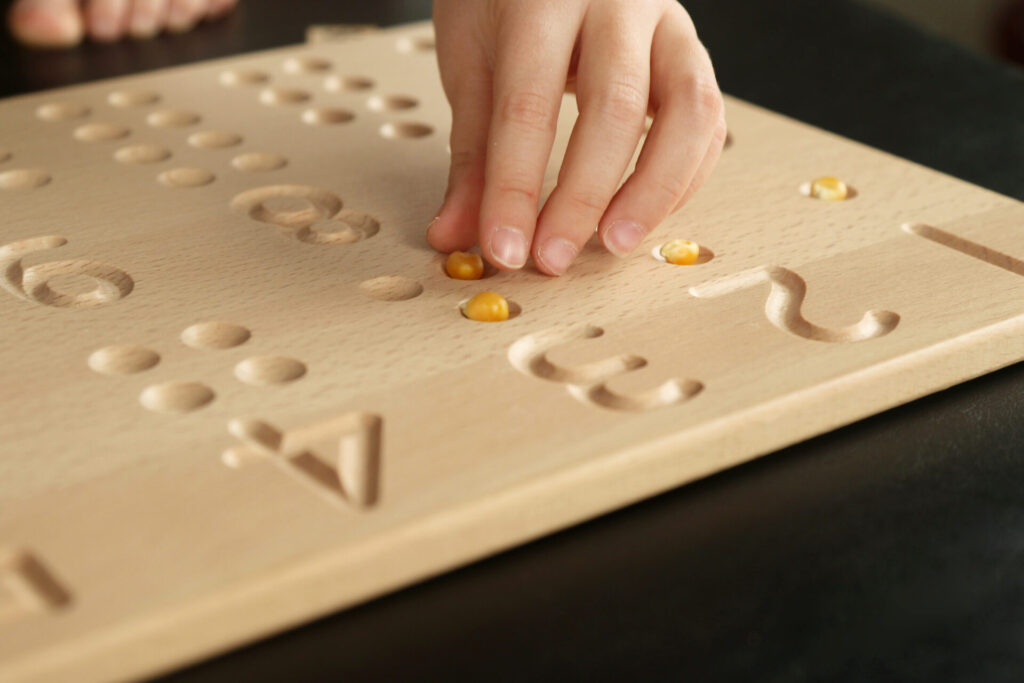
Montessori math materials are all designed to develop a strong connection between quantities and their corresponding numbers.
Here are just a few early Montessori math materials and activities that teach one to one correspondence:
- Spindle Boxes
- Numbers and Counters
- Golden Bead Material
- The Zero game
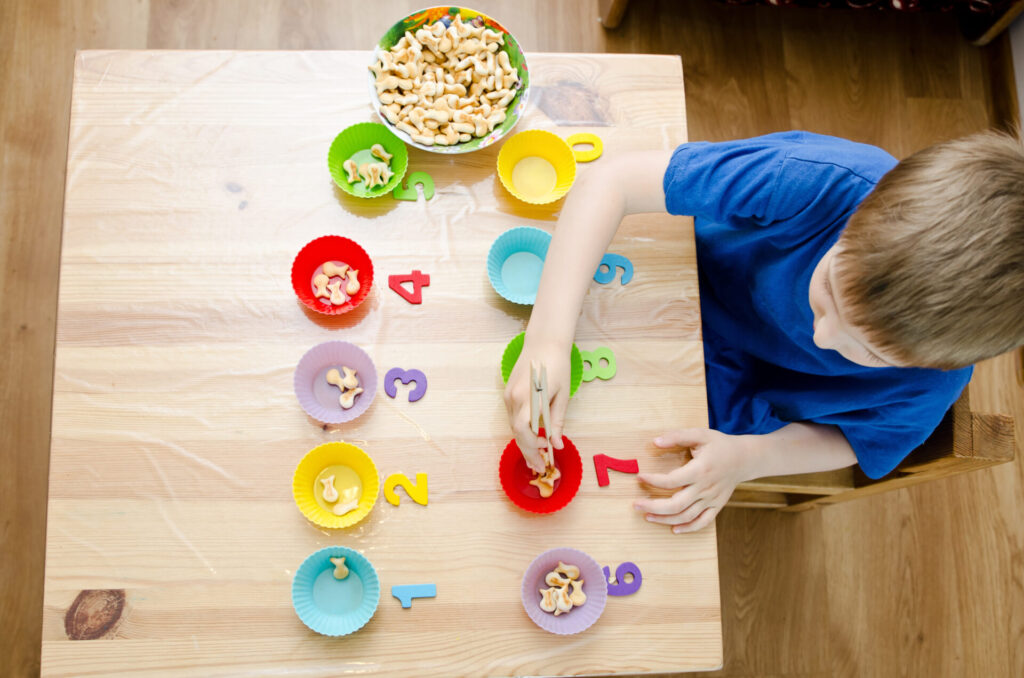
Simple 1:1 correspondence activities you can work into your day
One-to-one correspondence math activities are simple and a lot of fun for young children. These activities are incredibly engaging, as well. (And fun for caregivers to set up.)
One to one correspondence activities should be introduced in the following order:
- Transferring one item into one empty slot (no written numbers) – ages 18m+ (approx)
- Matching items according to their number symbol – ages 3.5+ (approx.)
It is important to use objects that are uniform in size and shape, as to isolate the math concept.
When presenting 1:1 transferring activities to your young toddler, say the number out loud as you transfer.
When your child gets a little older, around the age of 3 or so, you can begin to incorporate written numbers into your 1:1 correspondence activities.
The one-to-one correspondence activities you set up for your child should be self-correcting; have control of error.
The control of error for one-to-one correspondence activities is the number should be the total number of manipulatives available to the child.
For example, if your child is placing beans into 10 small bowls and they are tasked with filling each bowl with beans in increasing order, they should be given a total of 55 beans.
If they have extra beans or not enough beans, they will know they made an error.
Other benefits of these fun 1:1 correspondence activities:
- fine motor practice
- improved visual discrimination
- satisfies schematic need
- strengthens attention span
- provides different sensory experiences
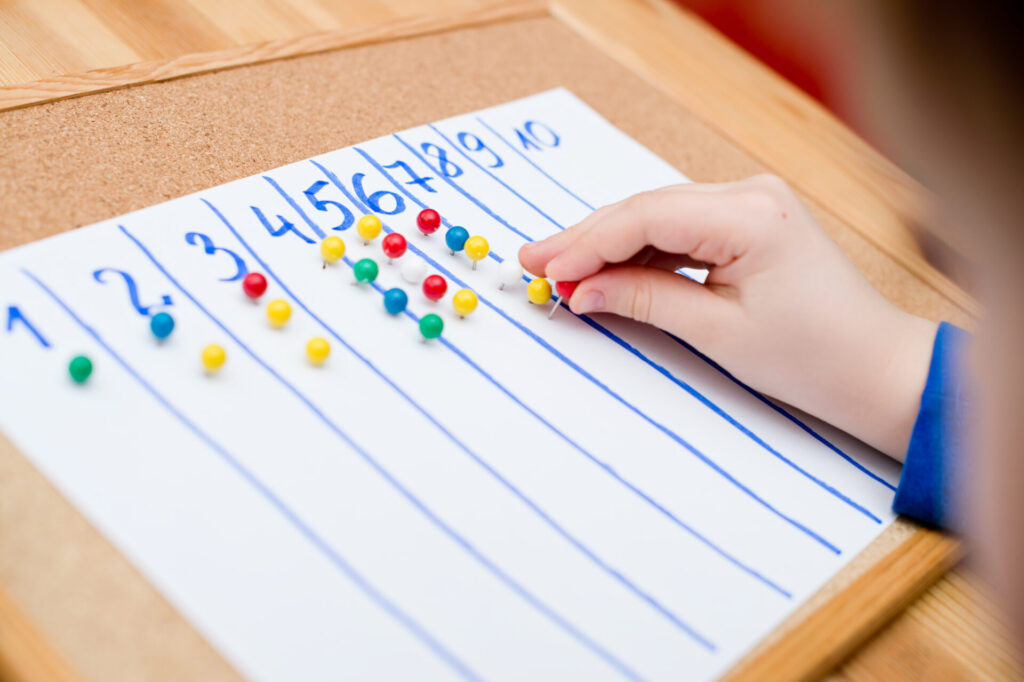
One-to-one correspondence activities can be done with many objects you likely have around your house and/or yard.
Just find items that are uniform in size and shape, label the container they are to be placed in with numbers, and you've got yourself a great early math activity.
Some of these item ideas might seem obvious after reading the first portion of the article, but looking through these lists can serve as a great reminder that math opportunities are all around us.
Math with food
- cheerios
- raisins
- blueberries
- tangerines
- black beans
Math in nature
- sweet gumballs
- rocks
- leaves
- sticks
- flower petals
Math with craft supplies
- spooning pom poms into an empty egg carton
- placing craft sticks into numbered toilet paper rolls
- clipping paper clips onto construction paper
- clipping clothespins onto the side of a plastic cup
- sticking thumbtacks into cardboard backing
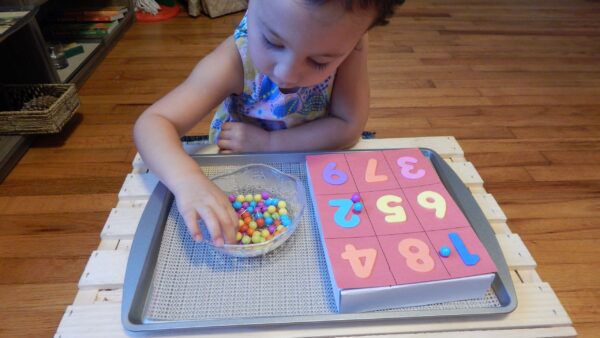
1:1 correspondence games and toys
- Skoolzy Butterfly Game
- Counting Owls Activity Set
- Naturskool Number Peg Boards
- Skoolzy Rainbow Counting Bears
As you can see, 1:1 correspondence is a very important mathematical concept that's very easy to incorporate into your home learning environment.
What 1:1 correspondence activities does your little one enjoy?
Cheers and don't forget to subscribe!
